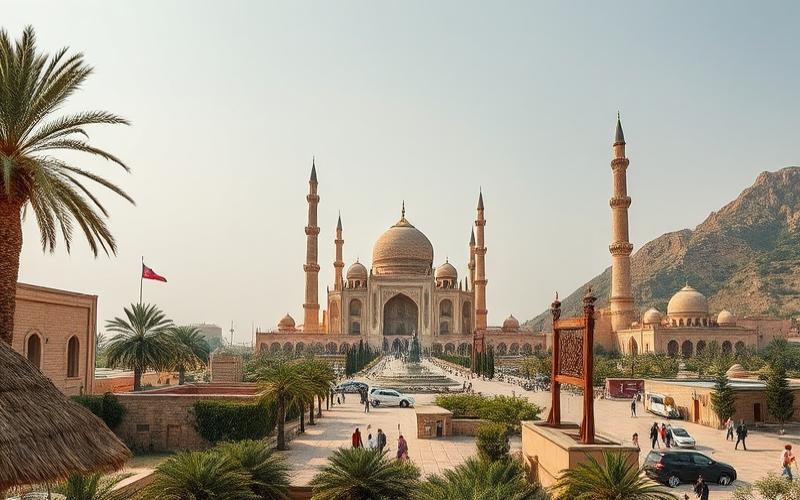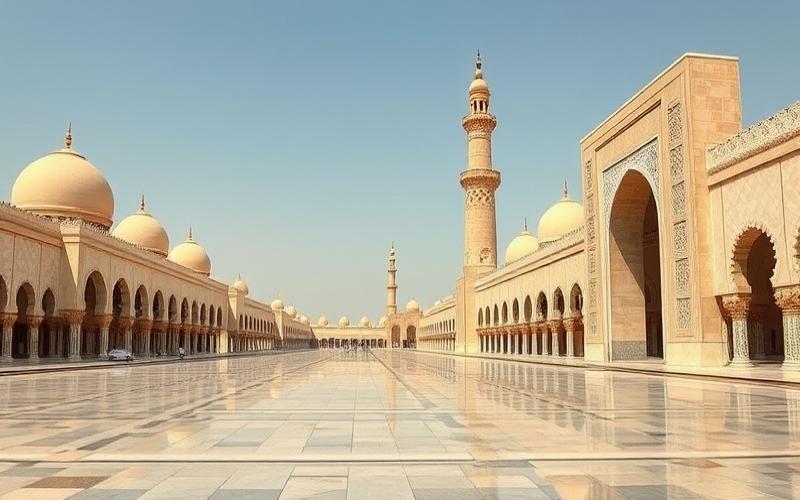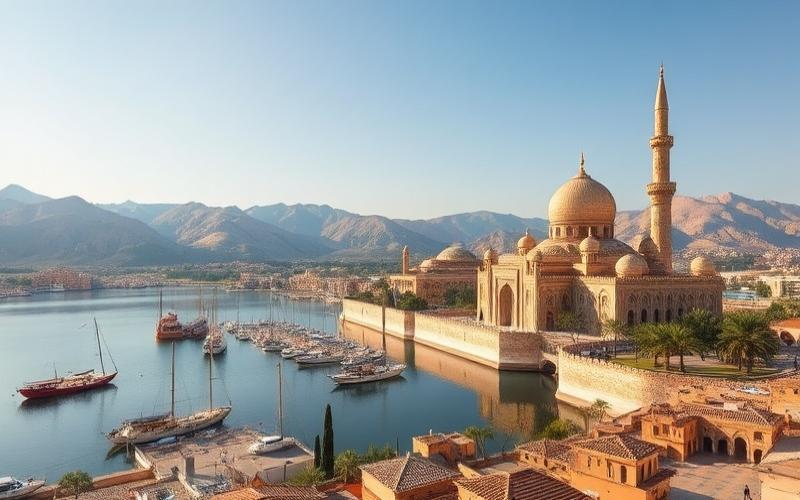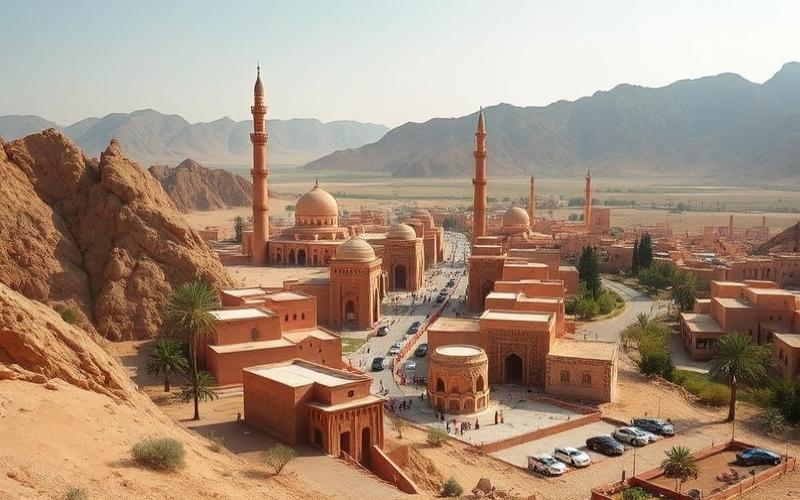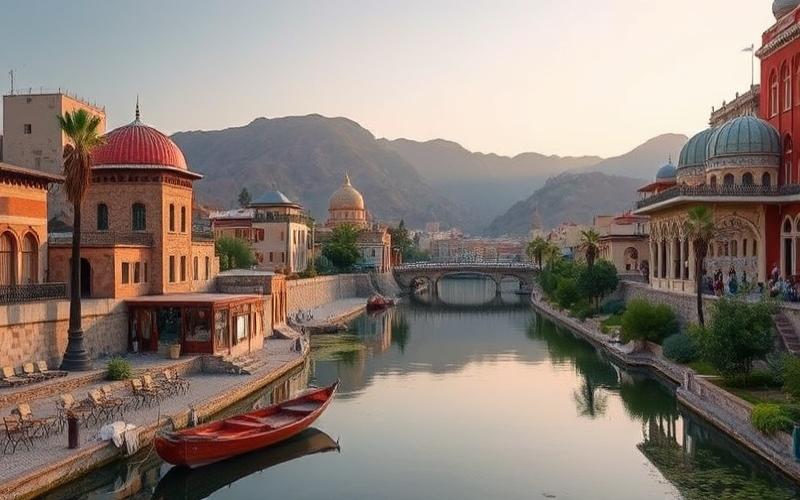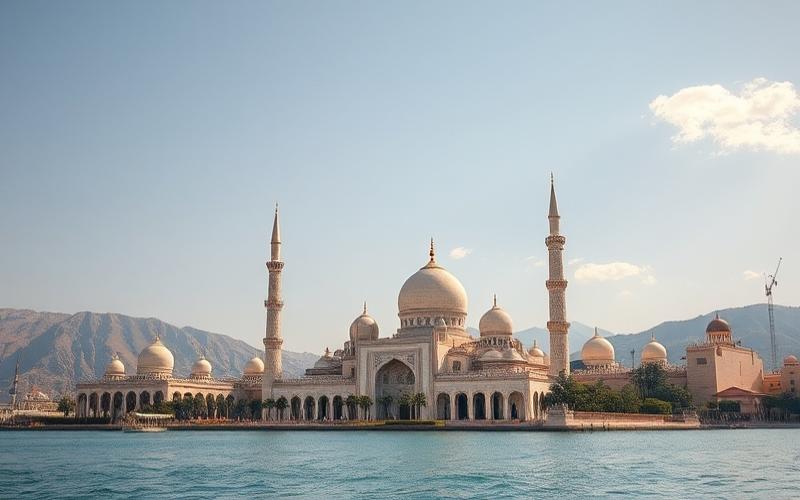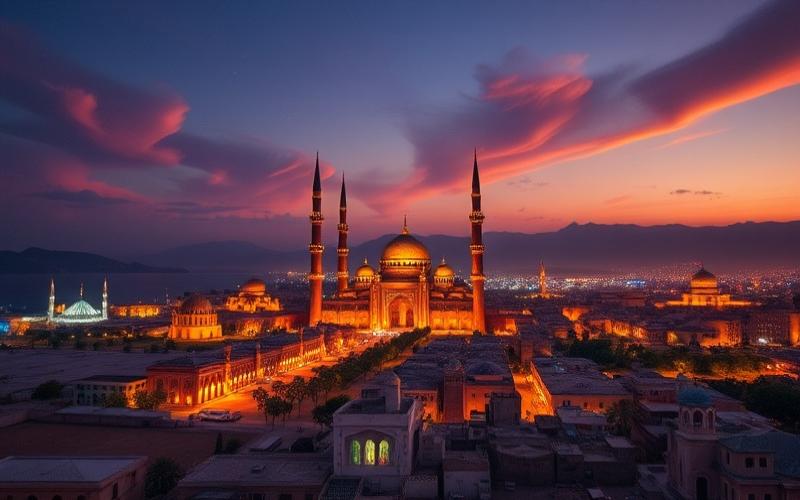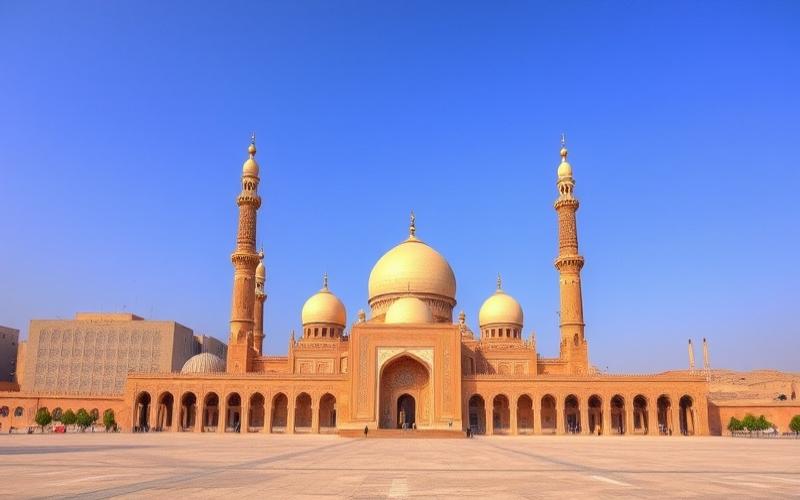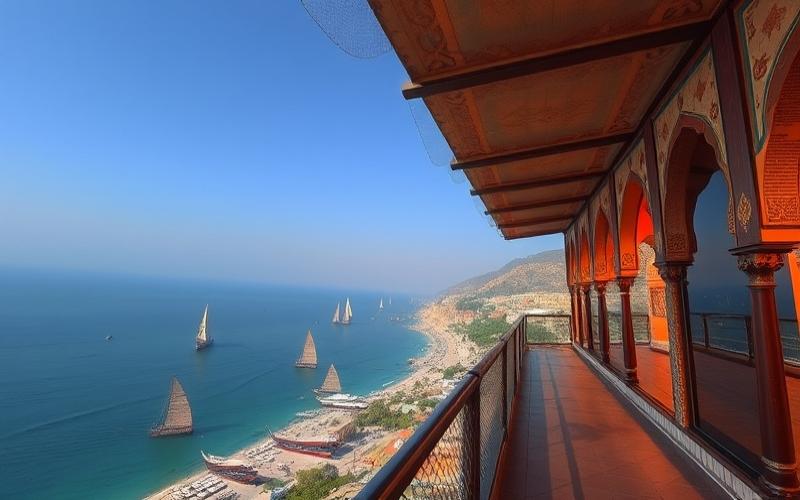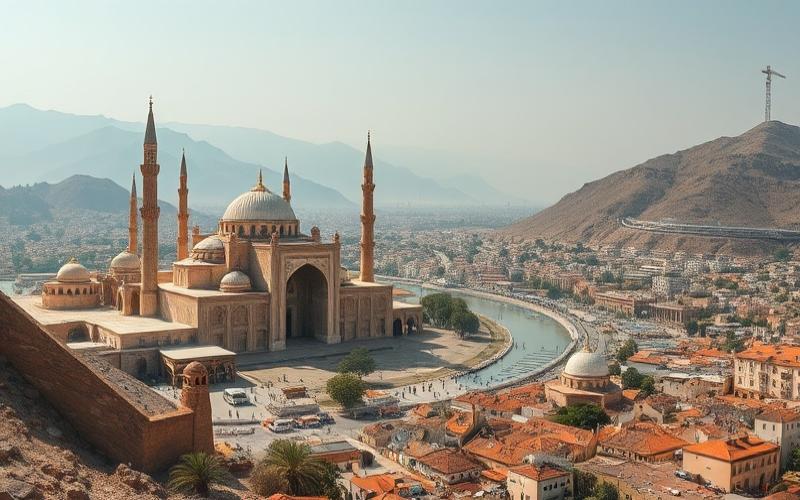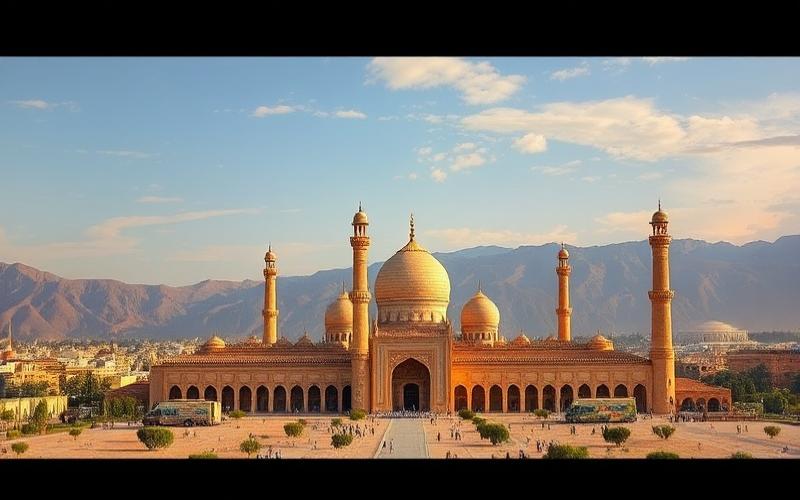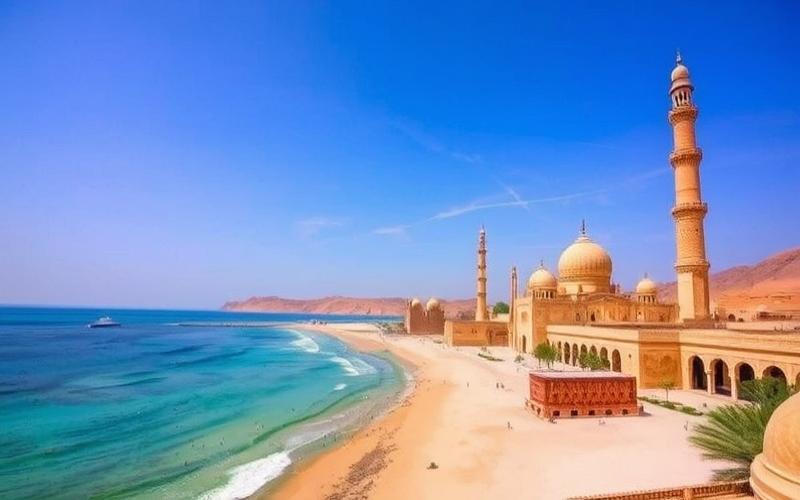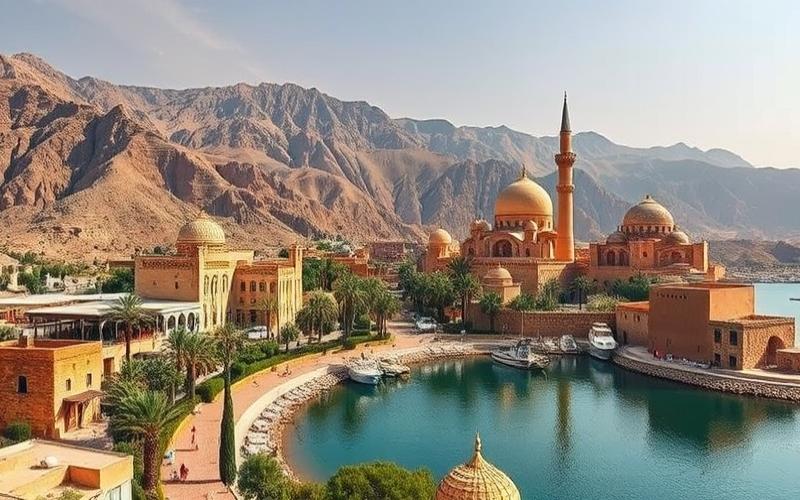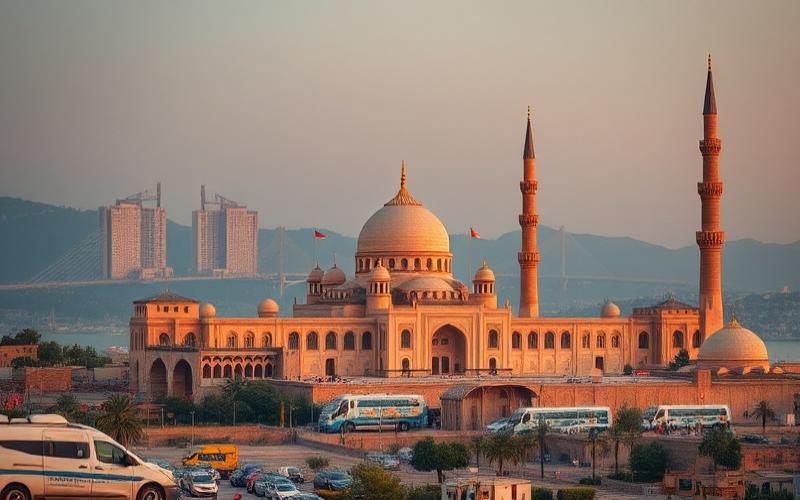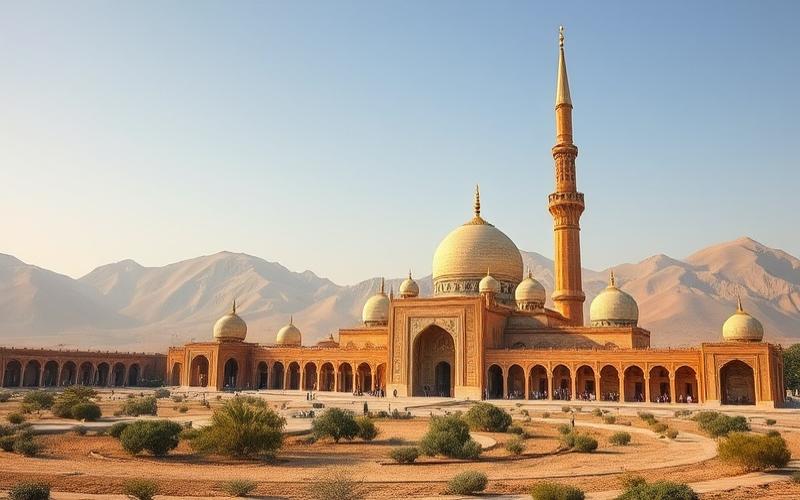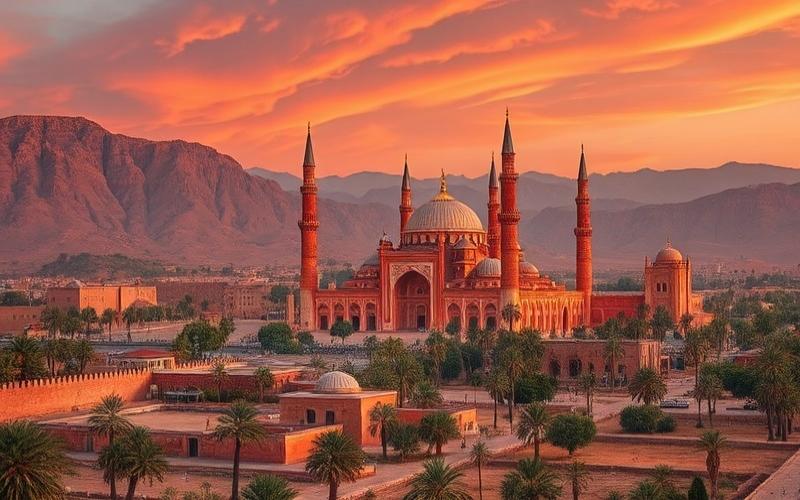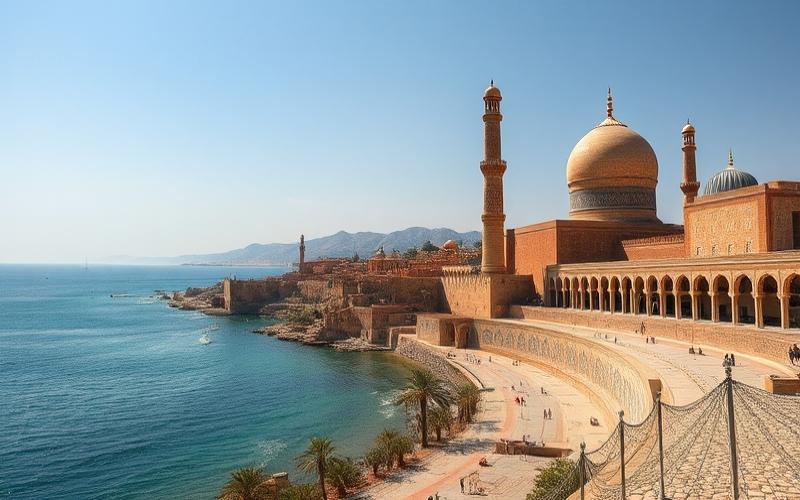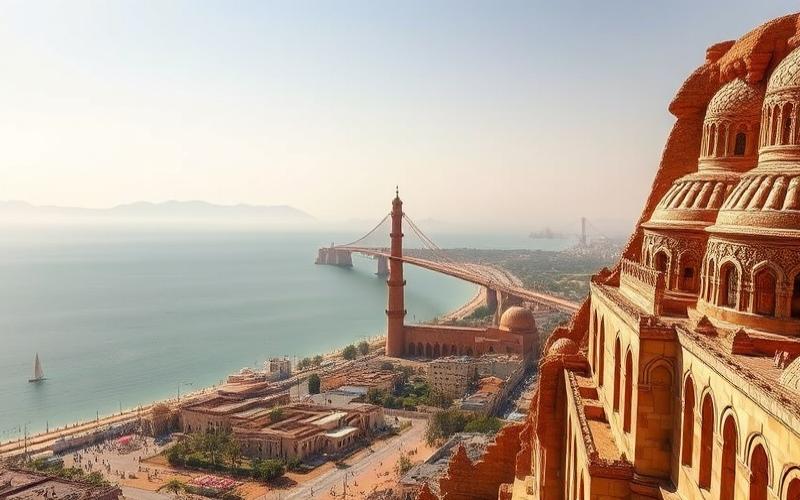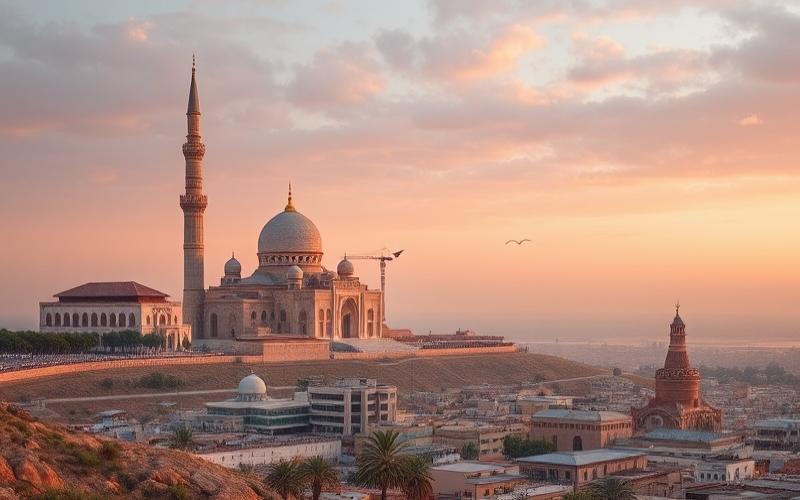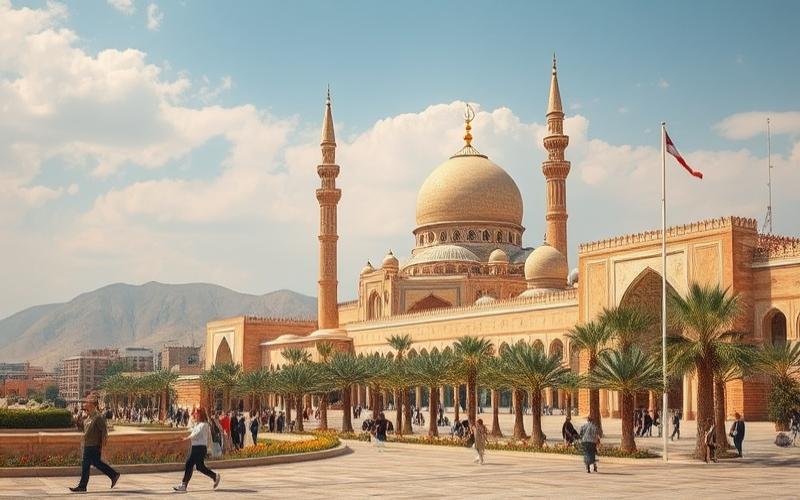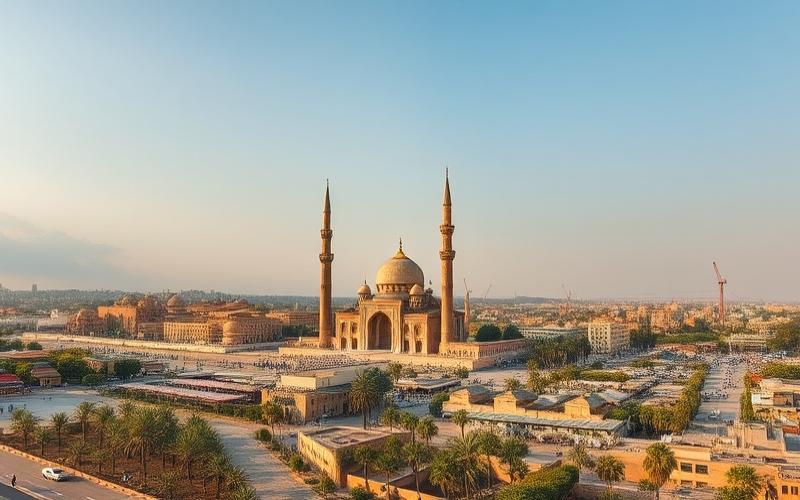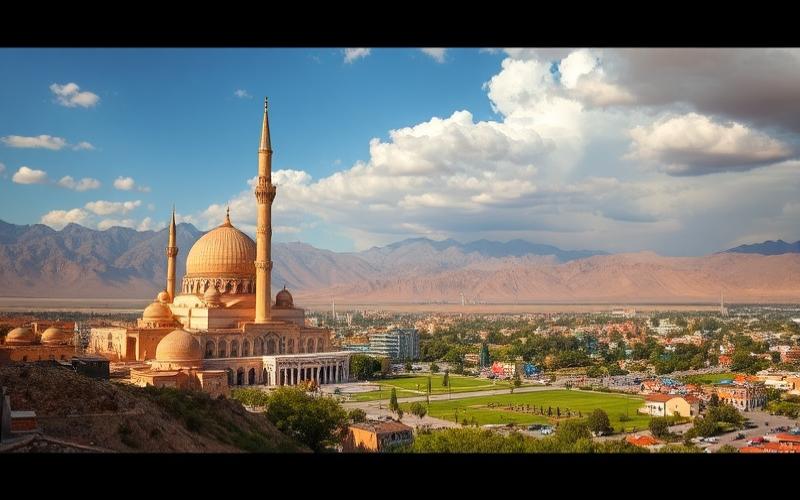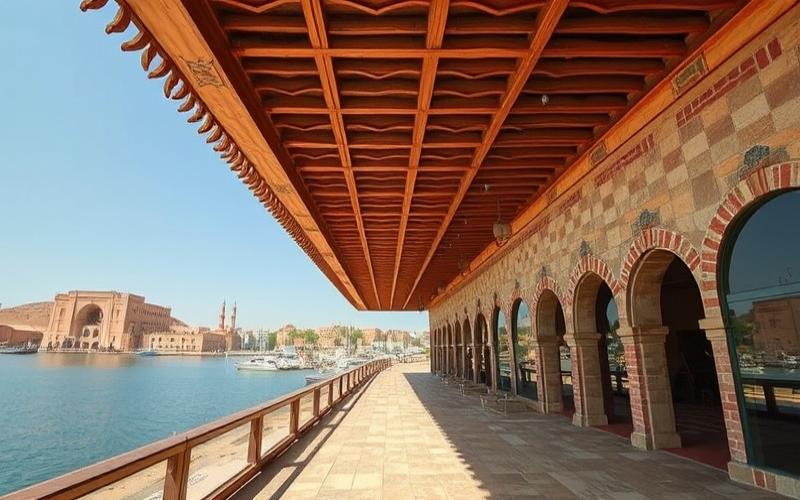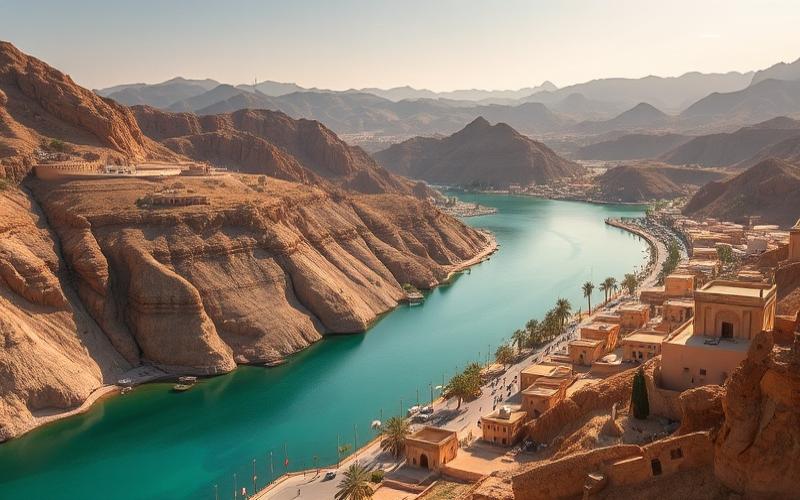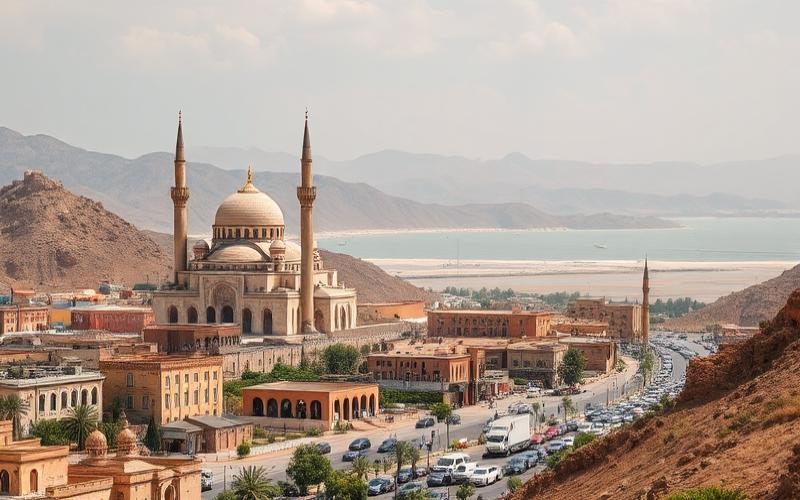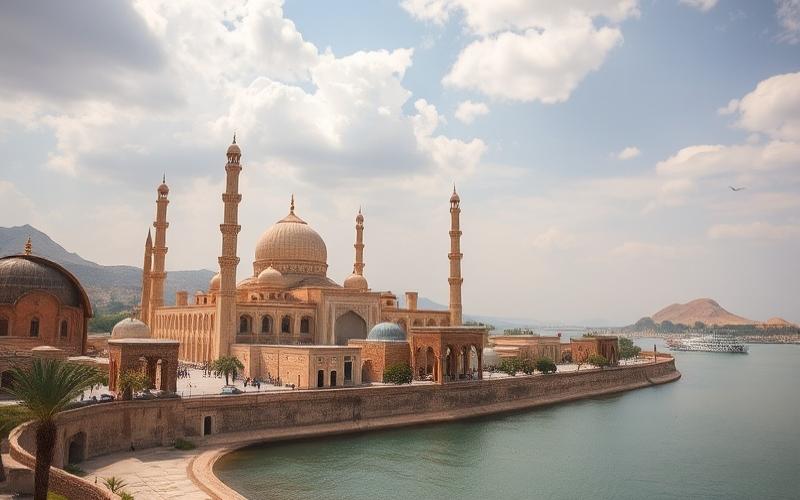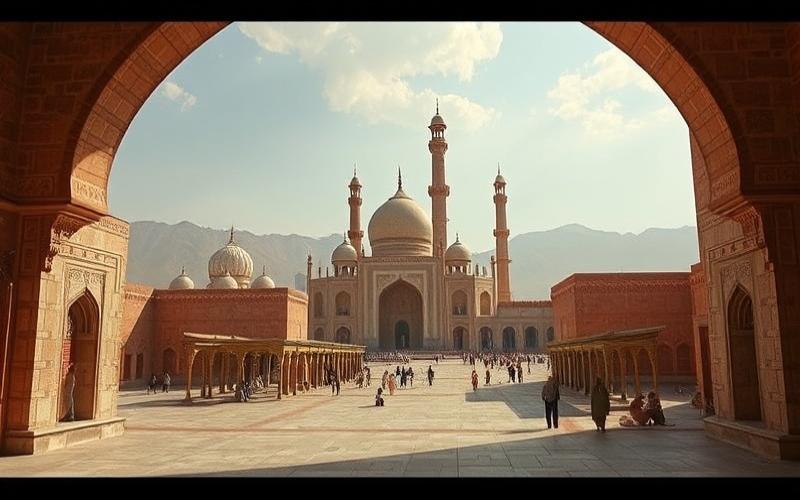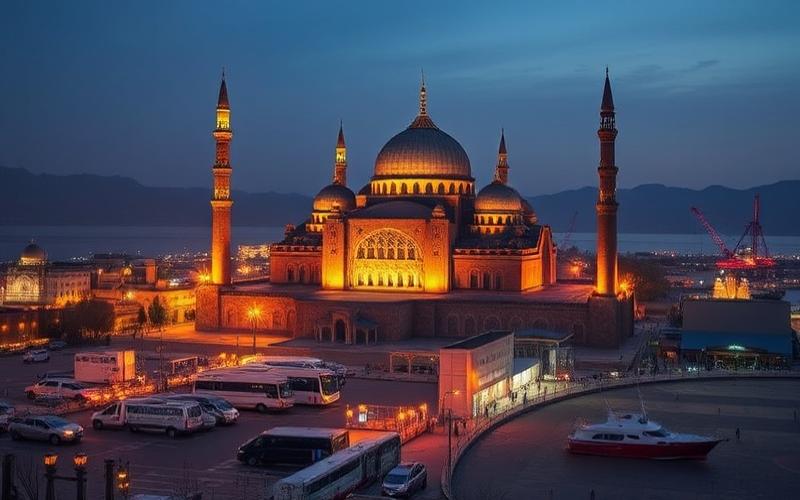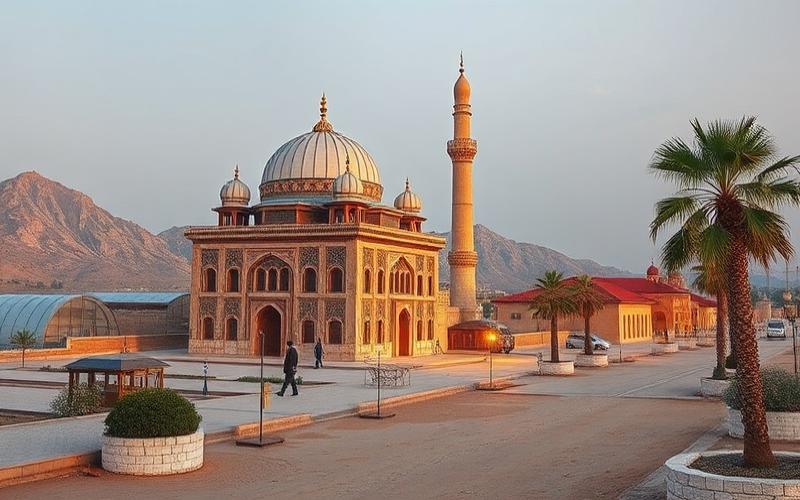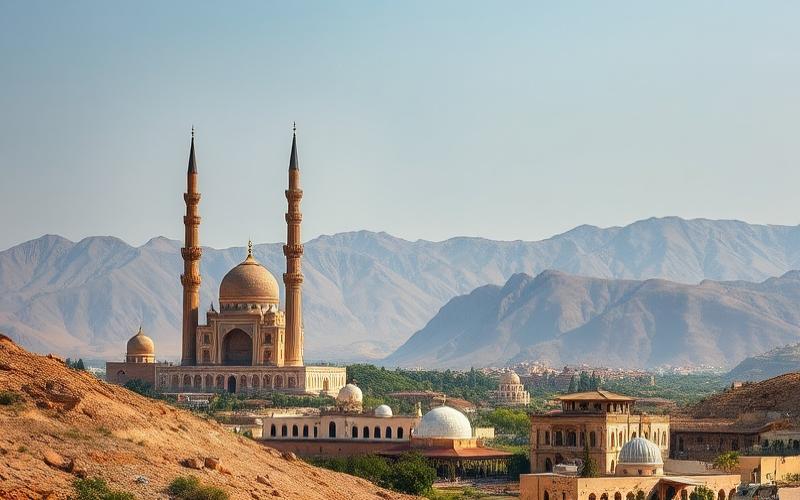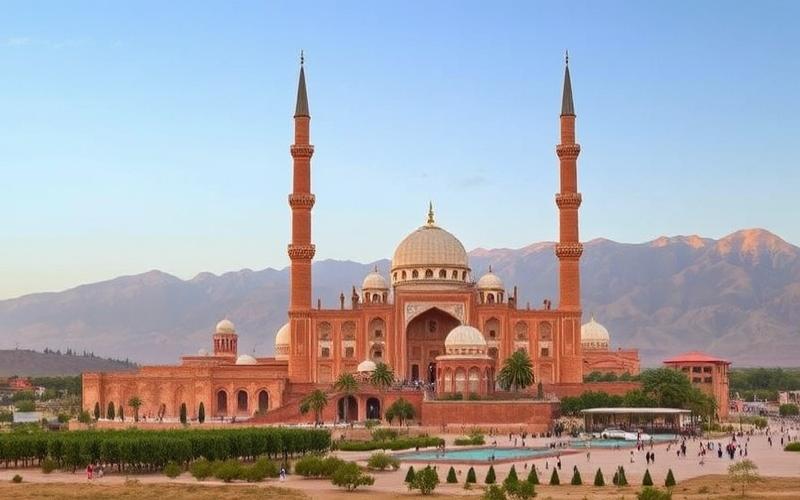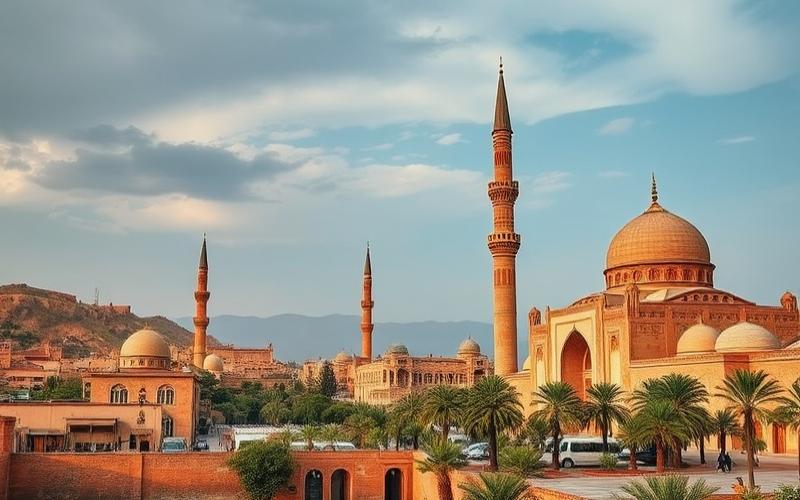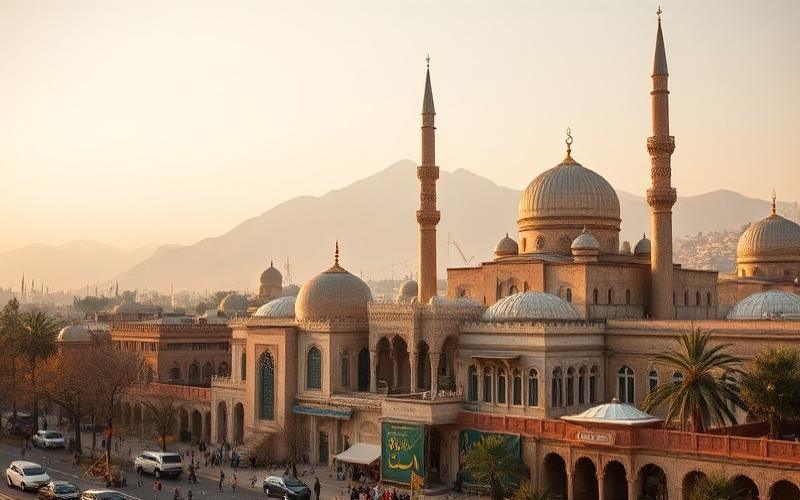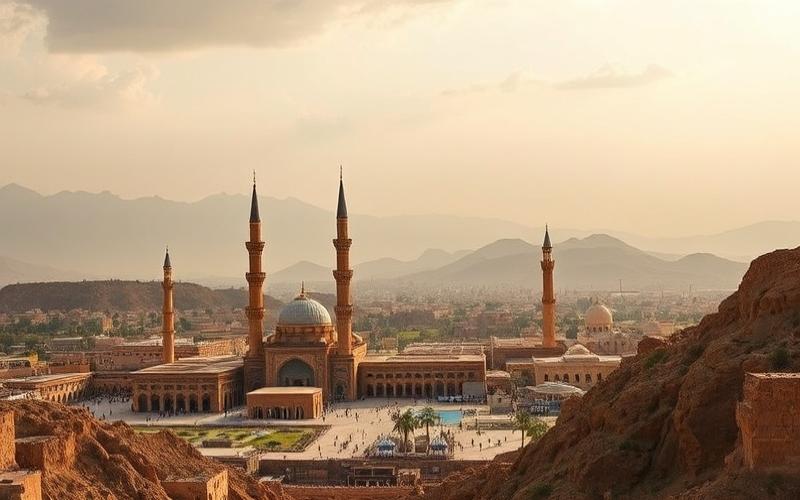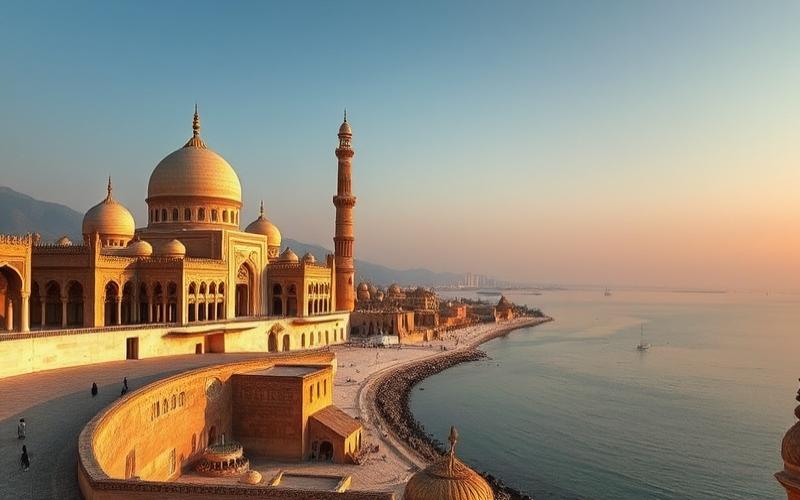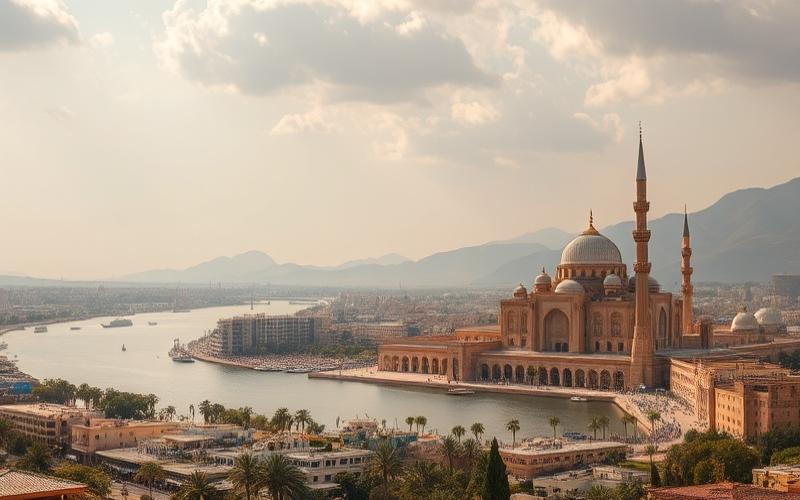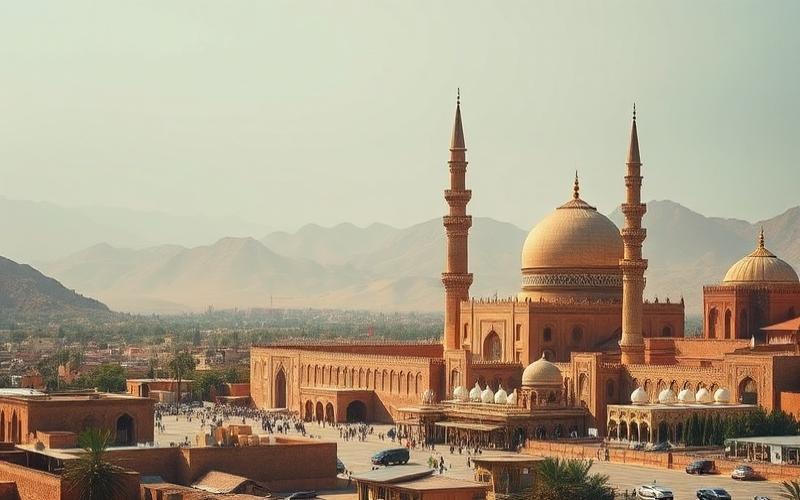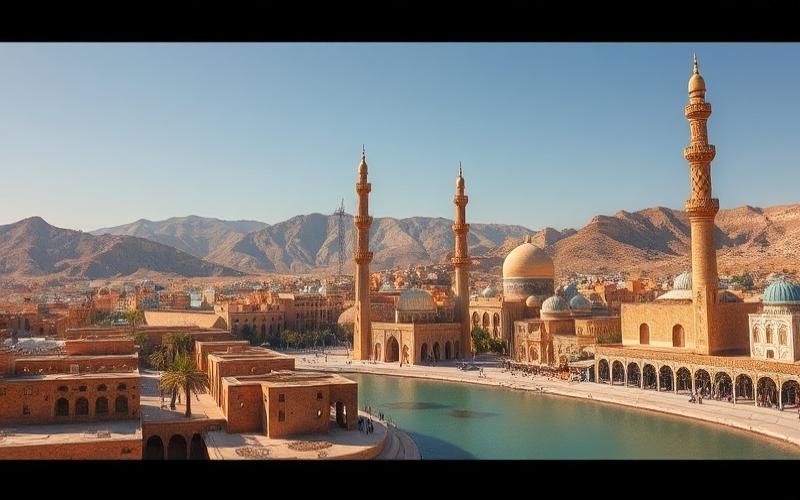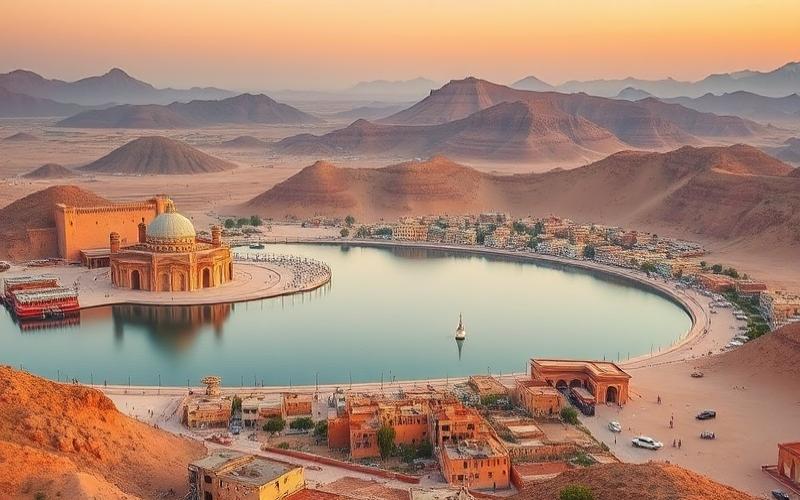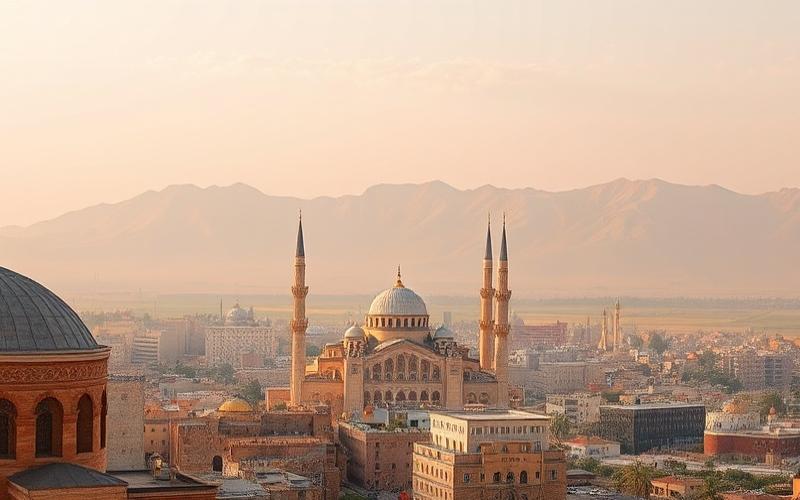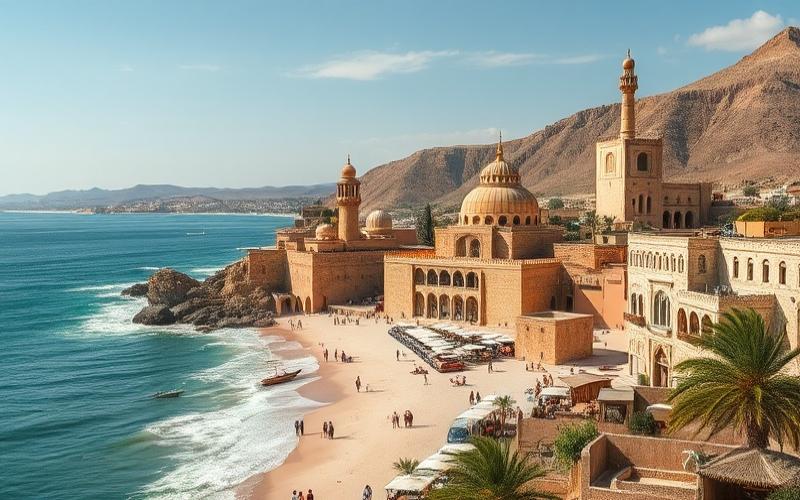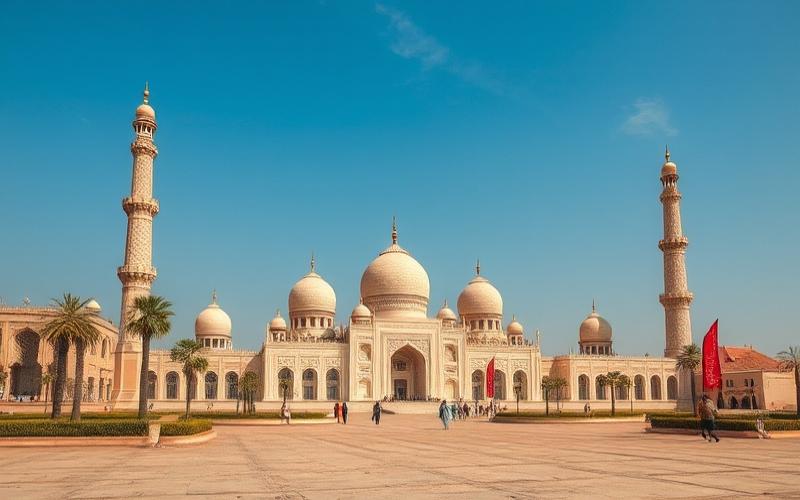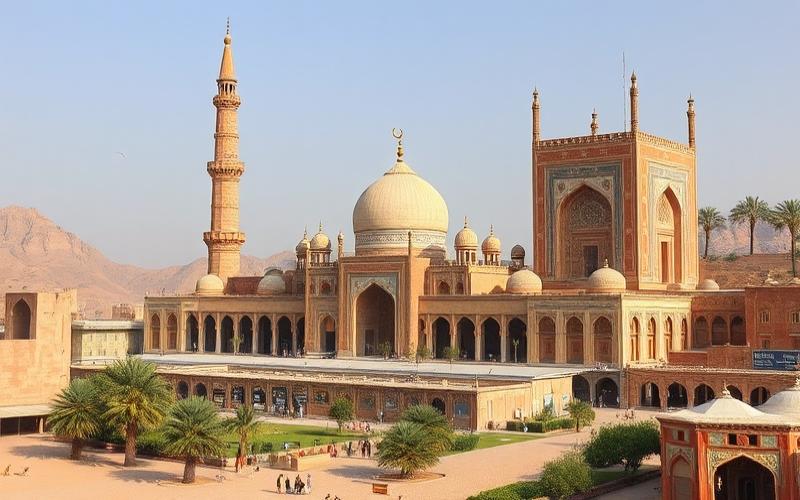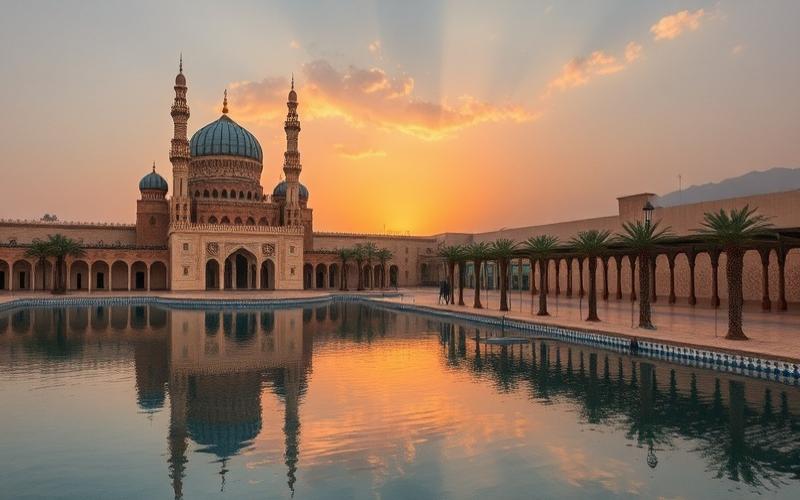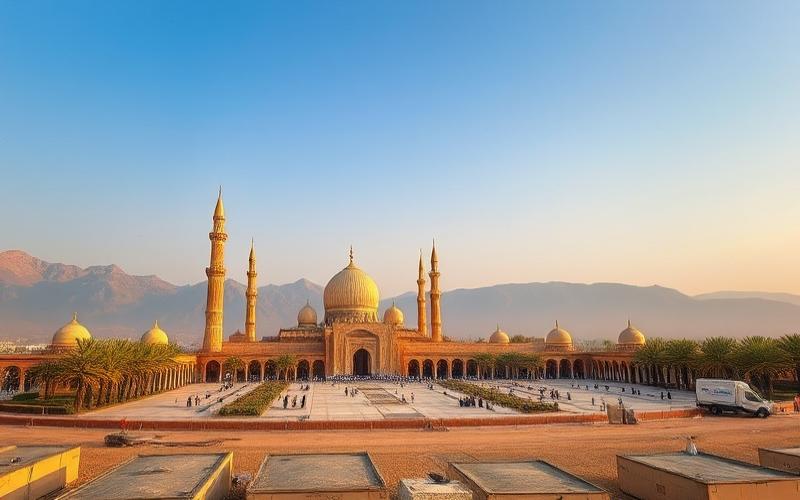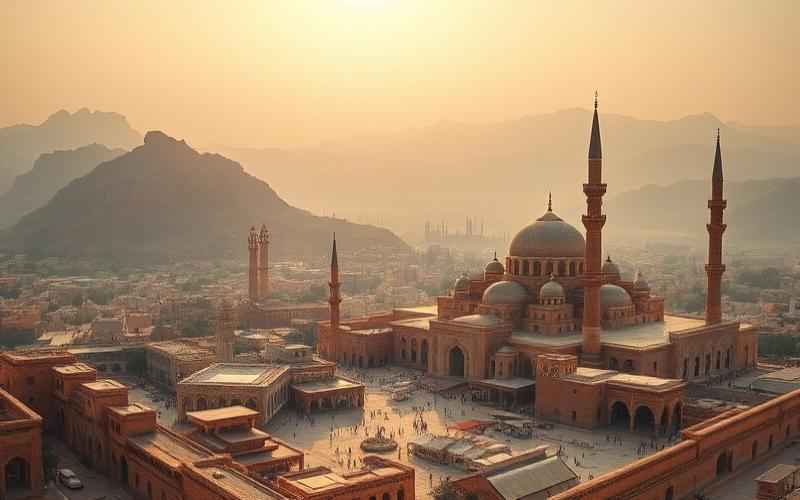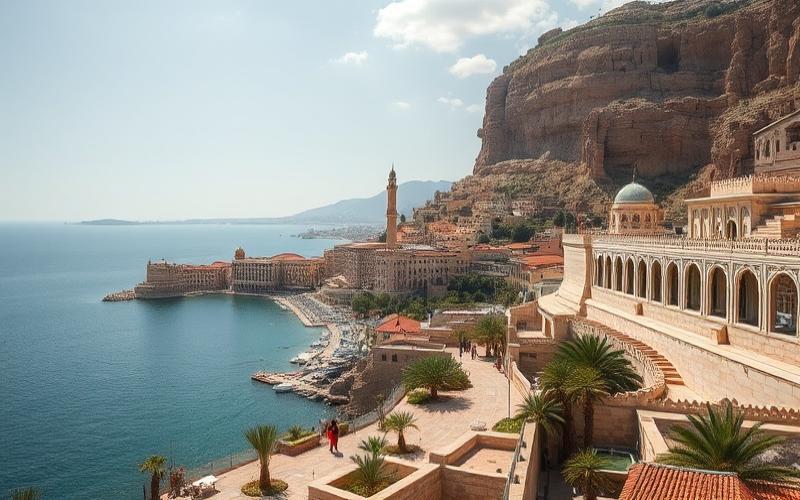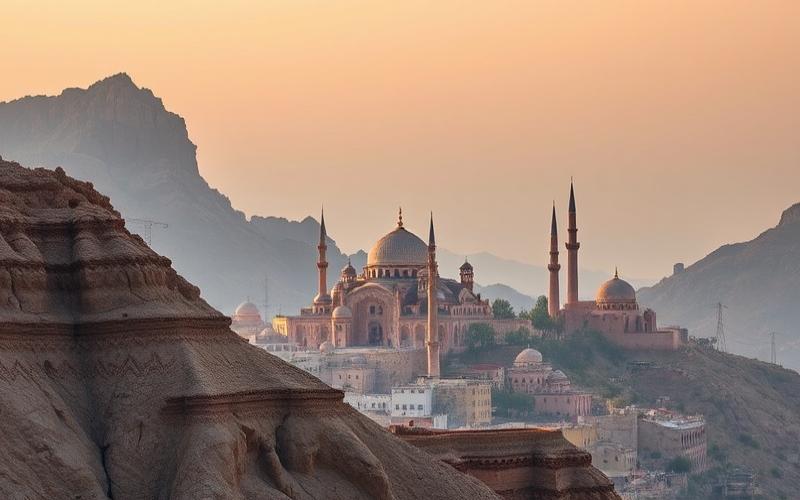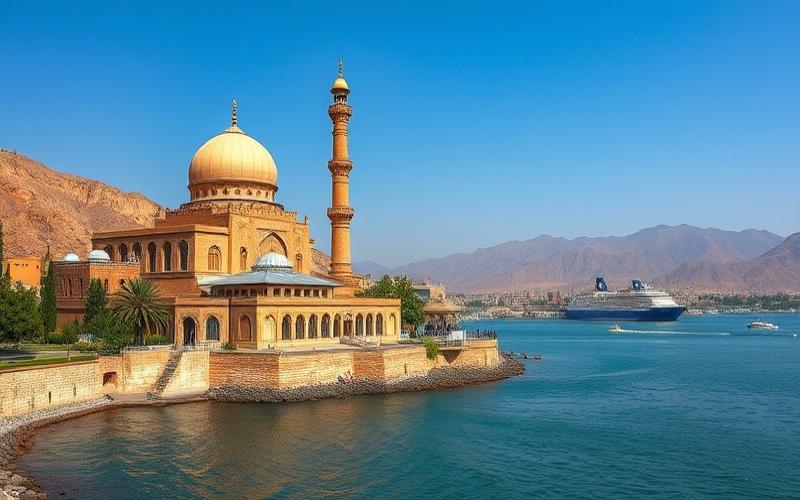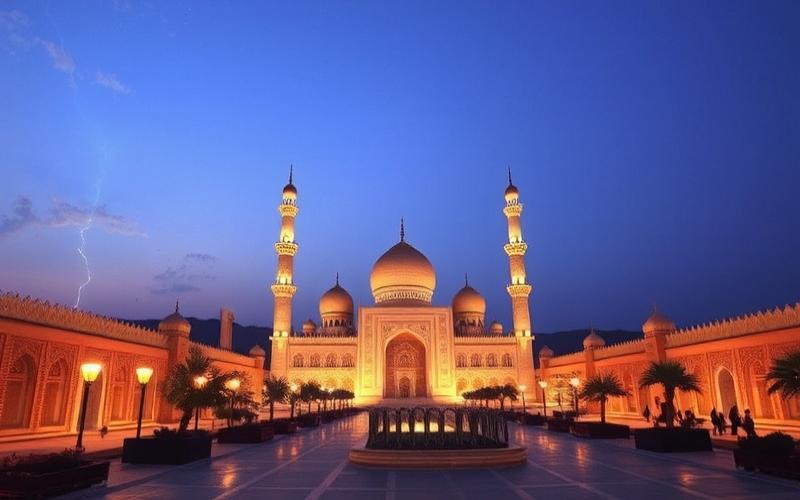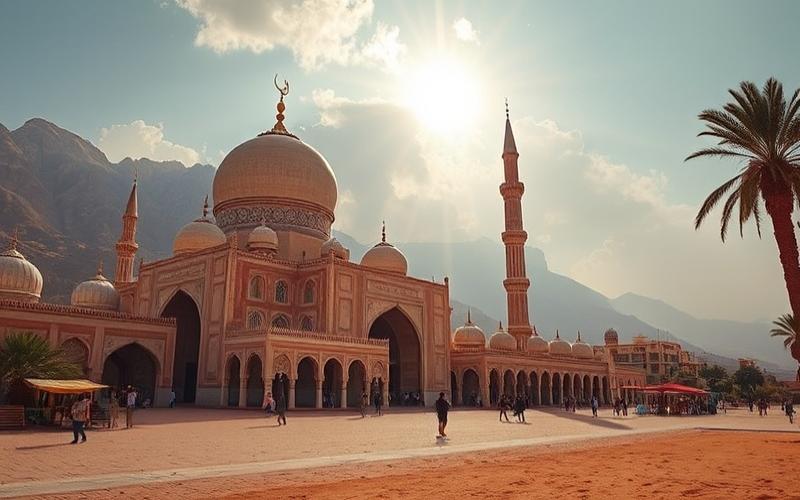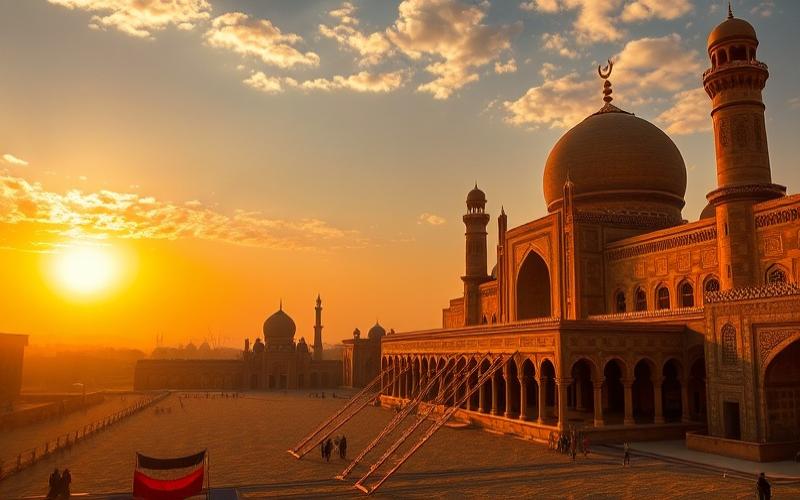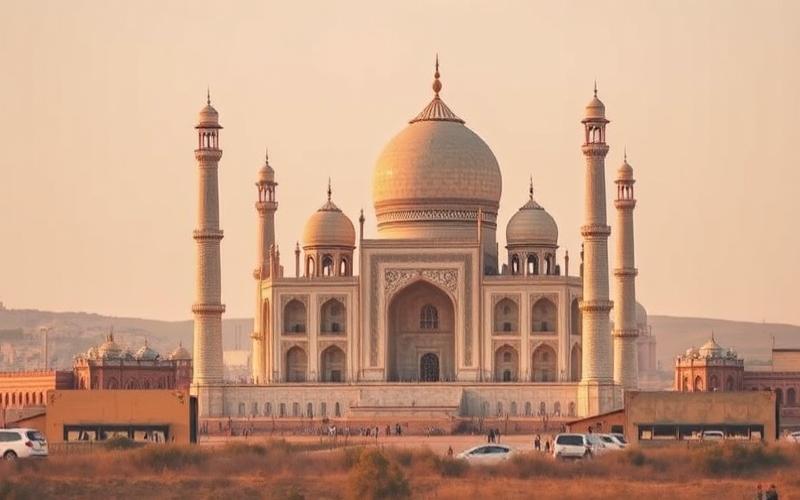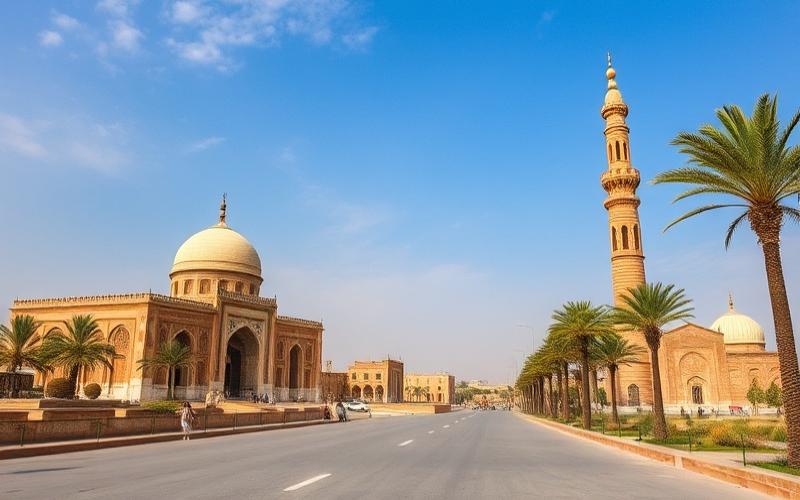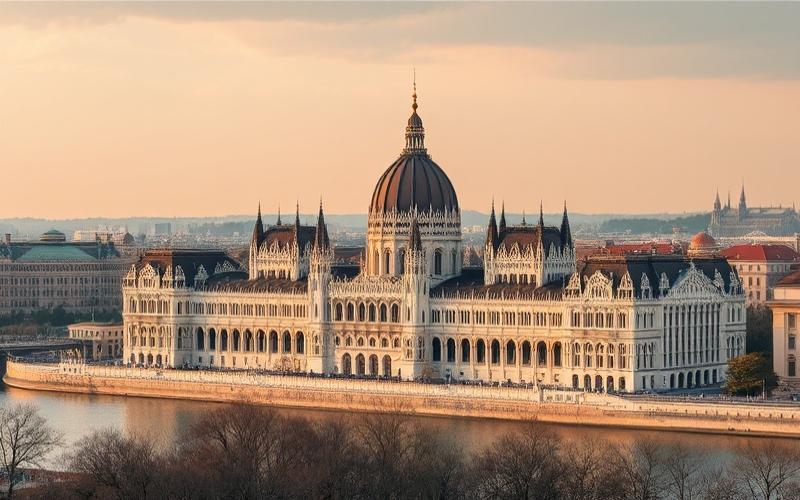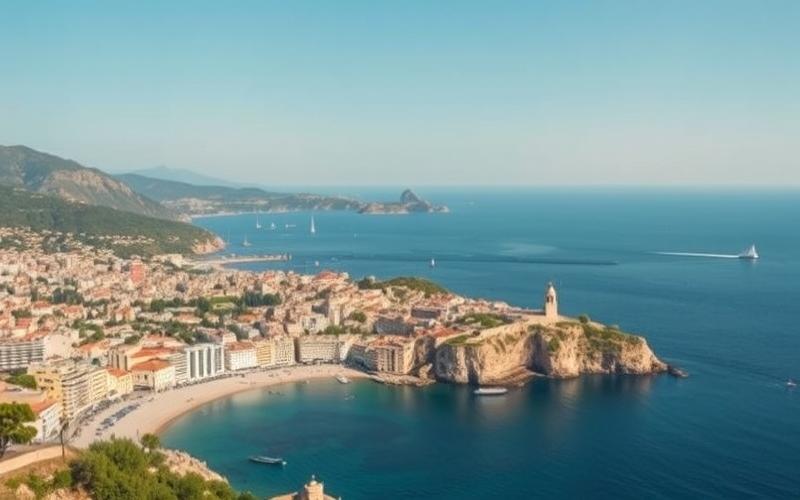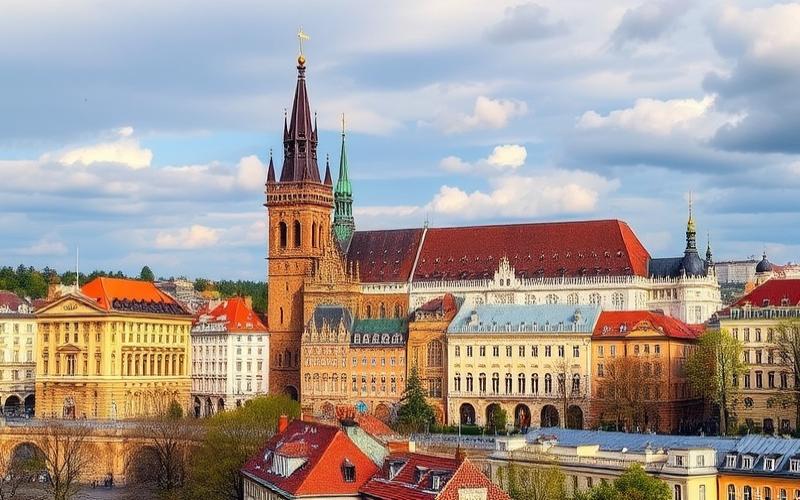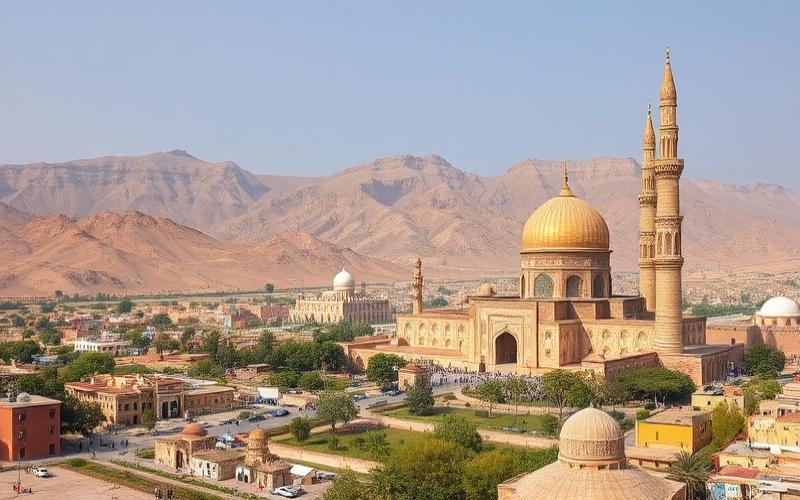
 Published on and written by Cyril Jarnias
Published on and written by Cyril Jarnias
Located in the Persian Gulf, Bahrain is a stunning archipelago composed of 33 islands, the largest of which is Bahrain Island itself. This small kingdom, with an area of just 765 square kilometers, stands out for its geographical diversity, blending sandy coasts, salt marshes, and a few modest hills, with the highest point being Jabal ad-Dukhan at 134 meters above sea level. This land, at the edge of Arabia and Asia, has long been a major strategic and cultural point, bearing witness to a rich history and astonishing biodiversity, particularly thanks to its mangroves and coral reefs.
Geographical Location of Bahrain
Bahrain is an archipelago located in the Persian Gulf, in Asia, at the heart of the Middle East. It lies about 28 km east of Saudi Arabia, about twenty kilometers north of Qatar, and approximately 200 km south of Iran. The country is surrounded by several islands and archipelagos, including the Hawar Islands near the Qatari coast.
| Geographical Position | Detail |
| Latitude / Longitude | 26°00’N, 50°33’E |
| Neighboring Countries | Saudi Arabia (to the west), Qatar (to the southeast), Iran (to the north, separated by the gulf) |
| Proximity | 28 km from Saudi Arabia, 20 km from Qatar, 200 km from Iran |
| Situation | Archipelago in the Persian Gulf, east coast of the Arabian Peninsula |
The total area of Bahrain is approximately 765 km² (with variations due to sea reclamation), making it the smallest state in the Persian Gulf. The archipelago officially comprises 33 natural islands, but the number of islands has increased with the creation of artificial lands, reaching over 80 islands. The main island, Bahrain, represents about 83% of the country’s total area. Other notable islands include Muharraq, Sitra, Umm an Nasan, and the Hawar Islands.
List of Main Islands:
- Bahrain (main)
- Muharraq
- Sitra
- Umm an Nasan
- Hawar Islands
The terrain is largely flat and desert, with a central plain rising moderately to a plateau. The highest point, Jabal ad Dukhan (“Mountain of Smoke”), reaches 122 to 134 meters according to sources. The total coastline is about 161 km.
The climate of Bahrain is arid:
- Very hot and humid summers, mild and pleasant winters.
- Frequent natural hazards: sandstorms, periodic droughts.
- Low and irregular rainfall, accentuating the desert character of the territory.
| Characteristic | Description |
| Terrain | Desert plain, central plateau, highest point at 122-134 m (Jabal ad Dukhan) |
| Climate | Arid, very hot and humid summers, mild winters, frequent sandstorms |
| Area | 765 km² (expanding with land reclamation from the sea) |
| Coastline Length | 161 km |
Bahrain, due to its location at the center of the Persian Gulf, holds a premier geostrategic position for maritime oil transit and the exploitation of marine resources.
Good to Know:
Located between latitudes 25°32’N and 26°20’N and longitudes 50°20’E and 50°50’E, Bahrain is an archipelago of 33 islands in the Persian Gulf, near Saudi Arabia and Qatar, with an arid climate influenced by its low altitudes and position in the region.
The Main Cities of Bahrain
Manama, the capital of Bahrain, embodies the country’s economic and cultural dynamism. A city of striking contrasts, it juxtaposes modern skyscrapers with lively traditional souks, reflecting the coexistence of modernity and tradition.
Economic Role:
- As the main financial and commercial center of the kingdom, Manama hosts numerous international bank headquarters and companies in the oil sector.
- Its modern infrastructure includes business centers, luxury hotels, major shopping malls (like Bahrain City Centre and Seef Mall), and an active port.
Cultural Role:
- Manama is the heart of cultural life with the Bahrain National Museum, a true heritage treasure tracing the island’s history from the Dilmun civilization to the contemporary era.
- The Al Fateh Grand Mosque, one of the largest in the world, illustrates the city’s architectural wealth and spiritual importance.
- The Bab Al Bahrain Souk offers an immersion into local culture, where spices, textiles, crafts, and pearl jewelry mingle, recalling the history of pearl diving.
Major Tourist Attractions:
- Qal’at al-Bahrain (Bahrain Fort), a UNESCO World Heritage site, witness to the island’s different historical periods.
- Lively waterfront and modern shopping districts.
- Frequent cultural events, contemporary art exhibitions, festivals.
Muharraq
Muharraq, the former capital, stands out for its historical heritage and central role in preserving Bahraini identity.
Historical Significance:
- An iconic city for pearl fishing, it is home to the Pearl Path, a UNESCO World Heritage site, tracing the country’s maritime and commercial past.
- Royal and administrative center during ancient periods.
Cultural Contributions:
- Traditional architecture with restored houses and ancient buildings.
- Cultural and artistic festivals, museums dedicated to pearls and maritime culture.
- Preservation of local crafts and know-how.
Riffa and Isa Town
Riffa and Isa Town illustrate Bahrain’s urban and demographic evolution, while remaining rooted in tradition.
| City | Approximate Population (2024) | Demographic and Economic Characteristics | Infrastructure and Particularities |
|---|---|---|---|
| Riffa | 120,000 | Predominantly residential, Bahraini families, rapid growth. | Two poles: East Riffa (residential and historical), West Riffa (modern and upscale residential). Shopping malls, sports clubs, international schools. |
| Isa Town | 40,000 | Diverse population, high proportion of civil servants and teachers. | Planned residential neighborhoods, numerous schools and universities, sports facilities, local markets. |
Modernity and Tradition
- Manama and Riffa are symbols of rapid modernization: skyline, shopping malls, modern transport infrastructure.
- Muharraq and Isa Town emphasize the preservation of traditions, whether through architecture, markets, or cultural events.
- All these cities illustrate Bahrain’s ability to combine urban development and respect for heritage, offering a living environment where modernity and legacy coexist harmoniously.
Statistics and Recent Urban Infrastructure
- Nearly 90% of Bahrain’s population resides in urban areas.
- The country invests heavily in infrastructure: roads, transport networks, modern residential areas, but also in the restoration of historical sites and heritage enhancement.
- The main cities have modern hospitals, universities, sports and cultural complexes, contributing to a high standard of living and the kingdom’s attractiveness.
Good to Know:
Manama, the dynamic capital of Bahrain, is home to the Bahrain Financial Harbour and the Bahrain National Museum, while Muharraq, with its traditional souks, is a UNESCO-listed heritage center. Riffa and Isa Town offer a blend of modern and traditional lifestyles, with notable demographic growth and expanding infrastructure, hosting approximately 80,000 and 70,000 inhabitants respectively.
Major Regions of Bahrain
| Governorate | Relative Location | Approximate Area | Geographical Characteristics | Distinctive Economic and Social Traits |
|---|---|---|---|---|
| Capital (Manama) | Northeast of the main island, north coast | Central urban part | Port city, densely populated, administrative center | Country’s financial and commercial hub; national social, cultural, political, and economic center; presence of skyscrapers, banking institutions, international company headquarters |
| Muharraq | Northeast, island separated from Manama by a strait | Second largest island in the country | Former capital, island connected to Manama by a bridge, international airport | Pearl tradition, historical architecture, traditional neighborhoods, airport; dynamic tourism and heritage sector |
| Northern Governorate | North of the main island | Extended urban area | Palm groves, residential areas, mix of new towns and old neighborhoods | Residential growth, urban agriculture, diverse community life |
| Southern Governorate | South and southwest of the main island | Largest, less populated | Desert, Jabal ad Dukhan (highest point), oil areas | Oil extraction, refineries, few dwellings, natural sites, Bedouin traditions, strategic importance for the monarchy (king’s residence in Riffa) |
Main Characteristics by Region:
Manama (Capital)
- Political, financial, and cultural center.
- Very high urban density.
- Seat of government institutions, stock exchanges, banks, and international companies.
- High standard of living and modern infrastructure.
- Driving role in the country’s economy, diplomacy, and social life.
- High population diversity, artistic dynamism, numerous shopping malls and museums.
Muharraq
- Former capital, preserves traditional architectural heritage.
- Location of the international airport.
- Historical heart of pearl fishing.
- Tourist attraction for its souks, historical houses, and cultural festivals.
Northern Governorate
- Rapid urbanization, numerous residential areas and educational infrastructure.
- Agriculture (palm groves), rare green spaces in the archipelago.
- Diverse population, high proportion of middle and working classes.
Southern Governorate
- Largest area, very sparsely populated.
- Desert landscapes, country’s unique relief (Jabal ad Dukhan).
- Dominant oil extraction, few agricultural activities.
- Riffa, the country’s second city, royal residence, strong political symbolism.
List of Impacts on the Country’s Politics, Economy, and Diversity:
Centralization of Power: Manama concentrates the majority of political and economic institutions, influencing national decisions.
Economic Diversity:
- Manama and Muharraq are the engines of the tertiary sector (finance, commerce, tourism).
- The South remains essential for the oil industry and energy supply.
- The North combines agriculture and urbanization, offering a balance between tradition and modernity.
Historical and Cultural Role:
- Muharraq preserves cultural and craft heritage.
- The South embodies Bedouin roots and the memory of the first oil drillings.
Social Cohesion and Diversity:
- Strong mixing of populations between Shia, Sunni, and expatriates, especially in urban areas.
- Contribution of regions to the country’s political stability and economic vitality.
Bahrain derives its wealth and stability from the complementarity of its regions, which combine ancestral traditions, modern economic dynamism, and marked cultural diversity.
Good to Know:
Manama, the capital located in the Capital Governorate, is the economic heart of Bahrain, housing major financial institutions, while Muharraq Governorate is famous for its cultural heritage and aviation industries; the Northern and Southern Governorates are respectively recognized for their demographic diversity and natural resources.
Neighboring Countries of Bahrain
Bahrain is an archipelago of thirty-three islands located in the heart of the Persian Gulf, east of the Arabian Peninsula. Its island position gives it an absence of natural land borders, but it has a coastline of 161 km.
| Characteristic | Detail |
| Location | Archipelago in the Persian Gulf |
| Position | East of Saudi Arabia, west of Qatar |
| Area | 665–765 km² (expansion through reclamation) |
| Number of Islands | 33 (more with artificial extensions) |
The closest countries are:
- Saudi Arabia, about 28 kilometers to the west.
- Qatar, located about twenty kilometers to the southeast.
Geographical proximity is manifested as follows:
- Bahrain lies between the large Qatar peninsula and the eastern Saudi coast.
- Iran is further away, about 200 km to the north.
Physical or Maritime Connections:
A major axis: the King Fahd Causeway, a road causeway crossing the northwest of the gulf and directly connecting Bahrain to Saudi Arabia. This physical link facilitates economic and human exchanges.
Between Bahrain and Qatar, there is currently a sea strait not crossed by land; however, a project called the Friendship Bridge (Qatar-Bahrain) is under study to link the two countries with a structure similar to the existing causeway with Saudi Arabia.
Future Infrastructure Projects:
The most notable project remains the bridge between Bahrain and Qatar. Its realization would significantly strengthen regional connectivity, facilitating commercial flows and cross-border movements.
The Impact of Geographical Proximities on Bahrain
Economic Relations
The connection with Saudi Arabia via the causeway facilitates daily commercial movements, reciprocal investments in several strategic sectors (banking, energy).
Cultural Relations
Close family ties exist between Bahraini and Saudi populations; shared religious traditions; frequent movements for social or festive reasons.
Political Relations
Diplomatic relations are often influenced by this direct proximity with Riyadh. Regional security issues also push for sustained cooperation on various strategic dossiers.
In Summary:
Bahrain owes its regional dynamism to its direct connections with its immediate neighbors. These existing or planned physical links play a structuring role in its economic development as well as in its Arab-Persian cultural anchoring.
Good to Know:
Located in the Persian Gulf, Bahrain is an island near Saudi Arabia, accessible via the King Fahd Causeway, and Qatar, which fosters economic and cultural exchanges; infrastructure projects aim to further strengthen these ties.
Disclaimer: The information provided on this website is for informational purposes only and does not constitute financial, legal, or professional advice. We encourage you to consult qualified experts before making any investment, real estate, or expatriation decisions. Although we strive to maintain up-to-date and accurate information, we do not guarantee the completeness, accuracy, or timeliness of the proposed content. As investment and expatriation involve risks, we disclaim any liability for potential losses or damages arising from the use of this site. Your use of this site confirms your acceptance of these terms and your understanding of the associated risks.

